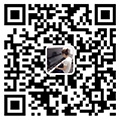汽車(chē)行業(yè)是一項(xiàng)涵蓋設(shè)計(jì)、制造、銷(xiāo)售和服務(wù)的綜合性產(chǎn)業(yè),對(duì)經(jīng)濟(jì)和社會(huì)發(fā)展具有重要意義。隨著科技的不斷進(jìn)步和消費(fèi)者需求的不斷變化,汽車(chē)行業(yè)正經(jīng)歷著巨大的變革。傳統(tǒng)燃油車(chē)逐漸向電動(dòng)車(chē)和混合動(dòng)力車(chē)轉(zhuǎn)變,智能化、互聯(lián)化和自動(dòng)化技術(shù)不斷應(yīng)用于汽車(chē)制造中。同時(shí),共享經(jīng)濟(jì)的興起也推動(dòng)了汽車(chē)共享和出行服務(wù)的發(fā)展,改變了人們的出行方式和消費(fèi)習(xí)慣。
然而,汽車(chē)行業(yè)也面臨著諸多挑戰(zhàn)和壓力。環(huán)保法規(guī)的加強(qiáng)促使汽車(chē)制造商加速推出更環(huán)保、更節(jié)能的產(chǎn)品,但同時(shí)也增加了研發(fā)成本和技術(shù)壓力。市場(chǎng)競(jìng)爭(zhēng)激烈,汽車(chē)制造商需要不斷提升產(chǎn)品質(zhì)量和服務(wù)水平,以吸引消費(fèi)者并保持市場(chǎng)競(jìng)爭(zhēng)力。此外,全球經(jīng)濟(jì)形勢(shì)的不確定性和地緣政治因素的影響也對(duì)汽車(chē)行業(yè)帶來(lái)了一定的影響,需要制造商靈活應(yīng)對(duì)市場(chǎng)變化。

配圖為廣州vi設(shè)計(jì)公司作品
汽車(chē)logo設(shè)計(jì)是汽車(chē)品牌形象的核心,它不僅僅是一個(gè)圖形標(biāo)志,更是品牌文化、價(jià)值觀和產(chǎn)品特點(diǎn)的集中展示。在設(shè)計(jì)汽車(chē)logo時(shí),需要考慮品牌定位、目標(biāo)受眾以及市場(chǎng)競(jìng)爭(zhēng)情況等因素。下面將介紹一些常見(jiàn)的汽車(chē)logo設(shè)計(jì)方法。
1. 簡(jiǎn)潔明快
簡(jiǎn)潔明快是汽車(chē)logo設(shè)計(jì)的基本原則之一。一個(gè)簡(jiǎn)單而清晰的標(biāo)志可以更容易地被人們識(shí)別和記憶。因此,許多汽車(chē)品牌的logo都采用了簡(jiǎn)潔的設(shè)計(jì)風(fēng)格,如奔馳、寶馬等。這些標(biāo)志通常由一些簡(jiǎn)單的幾何形狀組成,符合品牌的高端、大氣的形象。
2. 與品牌文化相符
汽車(chē)logo應(yīng)該與品牌的文化和歷史相符合。一些品牌的logo設(shè)計(jì)會(huì)融入品牌的傳統(tǒng)元素或特定的文化符號(hào),以體現(xiàn)品牌的獨(dú)特魅力和價(jià)值觀。例如,沃爾沃的標(biāo)志中包含了瑞典國(guó)旗的藍(lán)色和黃色,突出了其北歐風(fēng)格和安全性?xún)r(jià)值觀。
3. 體現(xiàn)品牌特色
好的汽車(chē)logo設(shè)計(jì)應(yīng)該能夠準(zhǔn)確地表達(dá)品牌的特色和核心價(jià)值。通過(guò)標(biāo)志的圖形、色彩和字體等元素,傳達(dá)出品牌的個(gè)性和特點(diǎn)。例如,路虎的標(biāo)志采用了一只威武的雄獅圖案,象征著力量和豪華。
4. 適應(yīng)多平臺(tái)應(yīng)用
隨著數(shù)字化時(shí)代的到來(lái),汽車(chē)logo不僅僅出現(xiàn)在汽車(chē)車(chē)身上,還會(huì)應(yīng)用在各種數(shù)字平臺(tái)上,如網(wǎng)站、手機(jī)應(yīng)用等。因此,設(shè)計(jì)師需要考慮到logo在不同大小和分辨率下的清晰度和可識(shí)別性,確保在各種場(chǎng)景下都能夠有效展現(xiàn)品牌形象。
1. Symbolism:
Automobile logos often incorporate symbols that represent speed, power, and elegance, reflecting the essence of the automotive industry. For example, the Ferrari logo features a prancing horse, symbolizing speed and agility, while the Lamborghini emblem depicts a raging bull, signifying strength and dominance.
2. Typography:
Typography plays a crucial role in automotive logo design, conveying the brand's identity and values. Sleek and dynamic fonts are commonly used to evoke a sense of modernity and innovation, reflecting the fast-paced nature of the automotive sector. For instance, the BMW logo utilizes bold, geometric lettering, projecting a sense of precision and performance.
3. Color Palette:
Colors in automotive logos are carefully chosen to evoke specific emotions and associations. Red is often used to symbolize energy and passion, while silver and chrome represent sophistication and luxury. Additionally, black conveys elegance and power, while blue suggests trustworthiness and reliability. The Mercedes-Benz logo, for example, combines a silver star enclosed in a circle, representing excellence and innovation.
4. Brand Identity:
Ultimately, a successful automotive logo embodies the brand's unique identity and heritage, distinguishing it from competitors and resonating with consumers. Whether it's the iconic Chevrolet bowtie or the iconic Volkswagen VW emblem, each logo tells a story and connects with enthusiasts on a personal level, fostering brand loyalty and driving sales in the competitive automotive market.

業(yè)務(wù)咨詢(xún) 付小姐

業(yè)務(wù)咨詢(xún) 舒先生

總監(jiān)微信咨詢(xún) 付小姐